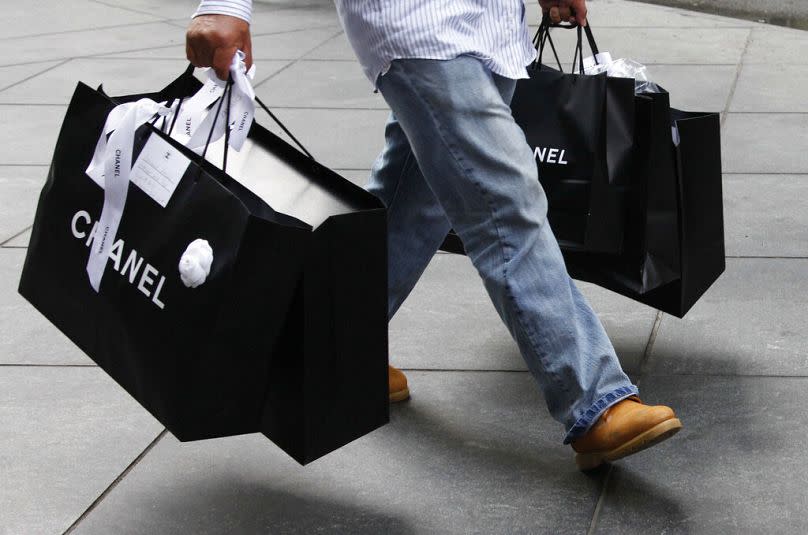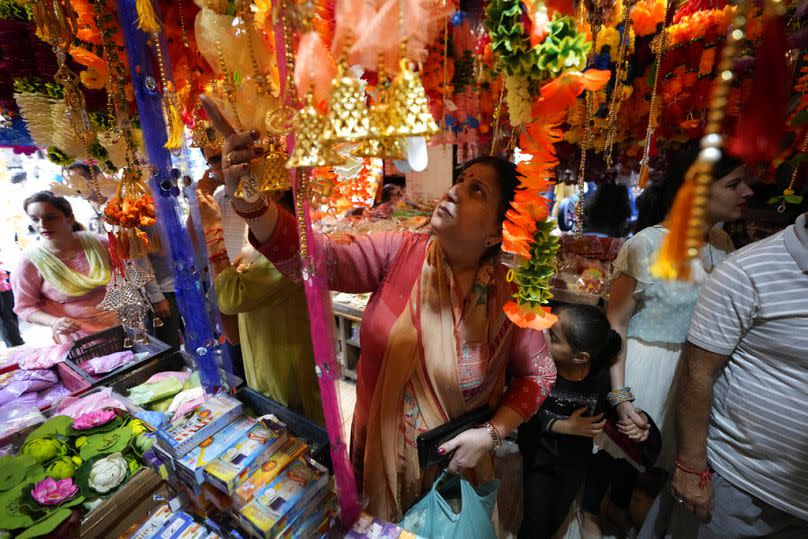Coming from the Sanskrit word Deepavali, meaning ‘row of lights’ Diwali is a Hindu, Jainism, and Sikh celebration of the triumph of good over evil.
With its emphasis on abundance and good fortune and rituals of lighting candles, it’s a chance to indulge in eating sweets, dressing up and gift-giving.
Usually taking place between late October and November, this year’s Diwali festivities will happen between 10-15 November, with the main day falling on 12 November – the darkest day under the Hindu lunar calendar of the month “Kartika”.
While the traditional choice of clothing for Diwali are saris, lehengas and salwar kurtas, the approach is changing, with India and its diaspora seeing a growing number of high-spending customers.
This trend has proved to be a big opportunity for luxury brands, such as Jimmy Choo, Swarovski and Gucci who have jumped on it and produced limited edition ranges for the occasion.
“We’ve noticed that our clients are style-forward and experimental, pairing international brands with their traditional outfits, blending the best of both worlds,” Cecilia Morelli Parikh, co-founder of Le Mill, a leading luxury concept store in Mumbai told Vogue.
Demand for luxury goods
Earlier this year we reported how demand for luxury goods from the wealthiest parts of society has soared.
In April, French company LVMH became Europe’s first company to break the $500 billion barrier. LVMH, which owns 75 luxury brands including Dior, Louis Vuitton and Tiffany also became one of the top 10 best-valued companies in the world.
This interest in luxury shopping does appear to be reflected in India where 70 per cent of Indians are ready to spend more this Diwali, representing a marked 35 per cent increase from last year.
According to research by Mileu, this is due to more than half of consumers viewing their financial situation as improved (53 per cent), and just under half being eager to celebrate a lot more this year (49 per cent).
A significant majority also said they were interested in purchasing luxury goods and apparel (84 per cent) and gold (80 per cent).
Luxury slowdown
This upbeat mood amongst Indians ahead of Diwali is good news for luxury brands, such as LVMH which have experienced a vibe shift over the last few months.
Shares in LVMH fell seven per cent in October due to a slowdown in the sales of spirits such as Hennessy cognac. Following several record years for the conglomerate, the post-pandemic luxury spree bubble may be bursting.
“In an uncertain economic and geopolitical environment, the Group is confident in the continuation of its growth,” LVHM said in a statement.

The STOXX Europe Luxury 10 index (.STXLUXP) also posted its biggest quarterly slide since 2020 earlier this month, which it put down to uncertainty over the European economy and also the uneven growth outlook for the Chinese economy.
Retailers have noted a growing gulf in spending patterns between the wealthy and so-called “aspirational” shoppers, who lack the means to regularly shell out on high-priced items.
India’s luxury market
India’s middle class is fast growing and represents 31 per cent of its population.
According to a report by Bain & Company, “younger customers and an expanding upper and middle class can propel the luxury market”, which is projected to expand to 3.5 times by 2030 in India.
Indian cultural website,“The Established” argues that culturally inspired collections are the key and brands need to tailor their approach to Indian consumer’s tastes.
Capitalising on Indian festivals, especially Diwali, is a good way to go. However, while multiple luxury labels released collections for the Chinese New Year which could be purchased globally, the same cannot yet be said about India.
Rarely do you see luxury brands’ websites releasing collections for the festival outside of India and even locally, the Diwali editions are limited.
Credit: Source link
